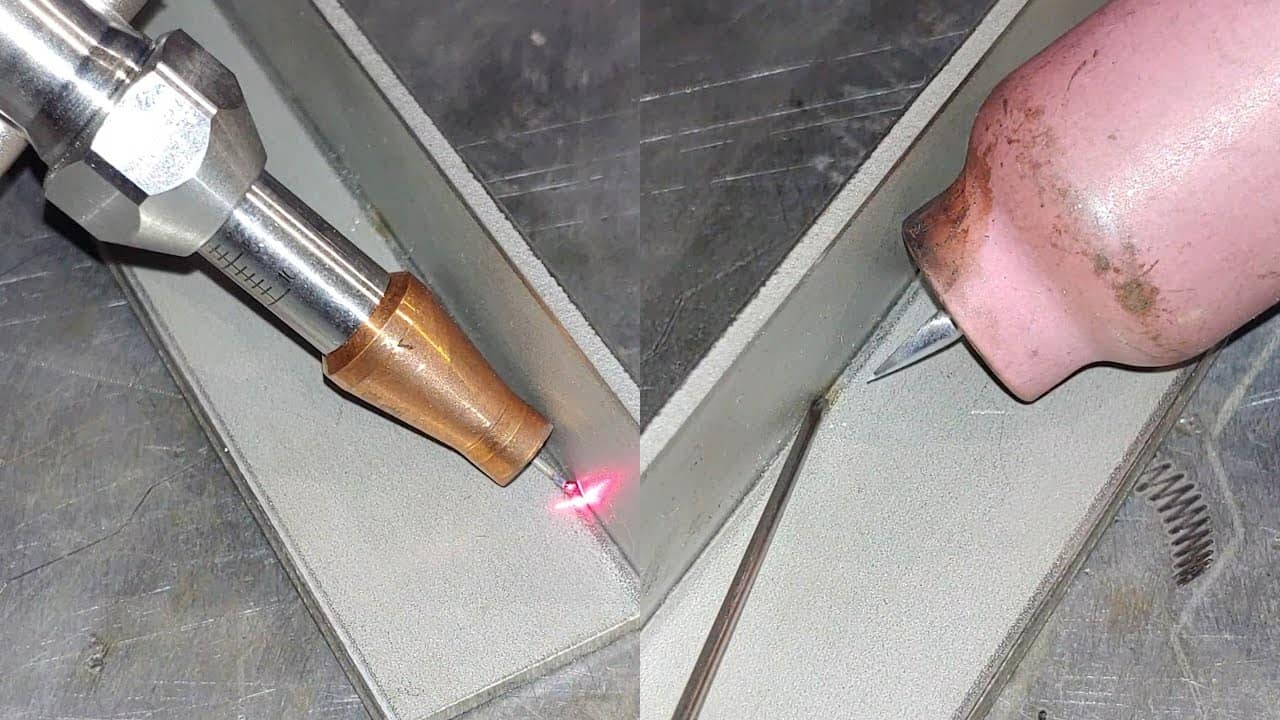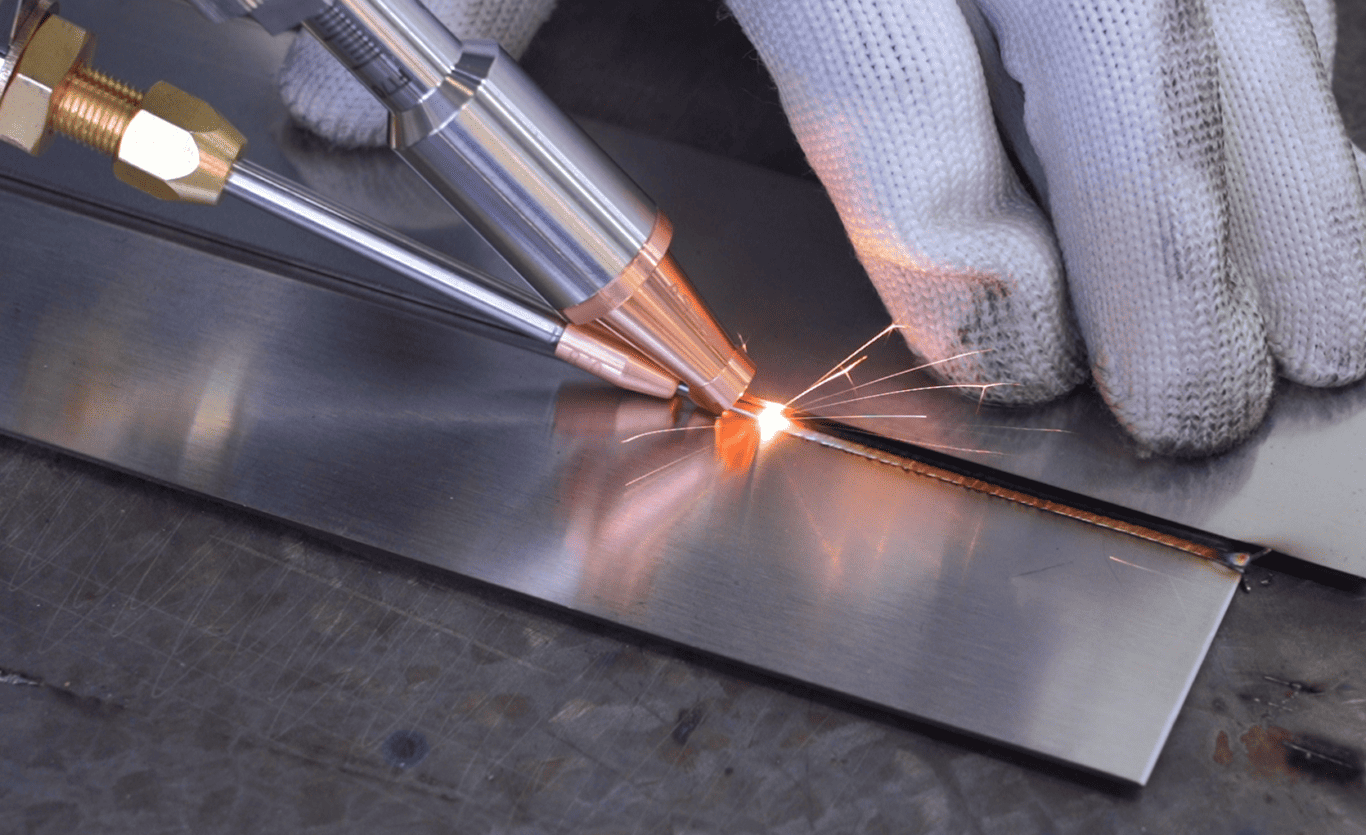Laser welding is a cutting-edge technology that has revolutionized the welding industry. With its precision, speed, and versatility, laser welding has become a popular choice for a wide range of applications. In this comprehensive guide, we will explore the technique of laser welding, its various types, advantages, and applications.
What is Laser Welding?
Laser welding, also known as laser beam welding (LBW), is a fusion welding process that uses a highly concentrated beam of light to join two or more pieces of material, typically metals. The laser beam generates intense heat, melting the material at the joint and allowing it to fuse together upon solidification.
Unlike traditional welding methods such as MIG, TIG, and stick welding, laser welding is a non-contact process that requires access to the weld zone from one side. This makes it ideal for joining materials that are difficult to access or delicate in nature.
Laser welding offers several advantages over conventional welding techniques, including faster processing times, higher precision, and reduced thermal distortion. Let’s delve deeper into how laser welding works and the different types of laser welding.

How Does Laser Welding Work?
In the laser welding process, a highly concentrated beam of light is focused on the joint between the materials to be joined. The laser beam rapidly heats the material, causing it to melt and form a weld pool. As the material solidifies, the weld is created, resulting in a strong and durable joint.
The laser beam used in welding is a coherent light of a single wavelength, which allows for precise control and targeting of the heat source. The laser can be pulsed or operated continuously, depending on the specific requirements of the welding application.
There are two primary types of laser welding techniques: heat conduction welding and keyhole welding. Let’s explore each of these techniques in detail.
Heat Conduction Welding
Heat conduction welding is a type of laser welding where the laser beam heats the material surface above its melting point. This technique is used to produce welds that do not require high weld strength. Heat conduction welding is typically performed using a low-power laser below 500W.
The process of heat conduction welding involves the laser beam heating the surface of the material, which then conducts the heat into the base metal. As the metal melts, it fuses with the adjacent material, forming a strong bond. Heat conduction welding produces smooth and aesthetically pleasing welds, making it suitable for applications where appearance is important.
Keyhole Welding
Keyhole welding, also known as penetration welding, is a high-power laser welding technique that generates a focused beam of light that vaporizes the material surface. This creates a keyhole, or a narrow tunnel, in the material. The laser beam penetrates deep into the material through the keyhole, resulting in a deep and narrow weld.
During keyhole welding, the temperature in the keyhole reaches over 10,000K, creating a plasma-like condition. This high heat vaporizes the material, allowing the laser beam to penetrate deeper. Keyhole welding is typically performed using a high-power laser above 105W/mm2.
The choice between heat conduction welding and keyhole welding depends on the specific requirements of the welding application, such as the desired weld strength, appearance, and material thickness.
Advantages of Laser Welding
Laser welding offers numerous advantages over traditional welding methods. Let’s explore some of the key benefits of laser welding:
1. High Precision
One of the significant advantages of laser welding is its ability to provide high precision. The laser beam can be controlled and focused on a small area, allowing for the welding of components with exceptional accuracy. This precision is especially beneficial for delicate or thin metals that require intricate welds.
2. Faster Processing Time
Compared to traditional welding methods, laser welding offers faster processing times. The highly concentrated laser beam allows for rapid heating and melting of the material, resulting in higher production rates and quicker turnaround times. This efficiency makes laser welding a cost-effective option for large-scale manufacturing operations.
3. Lower Risk of Thermal Distortion
Laser welding minimizes the risk of thermal distortion due to its low heat input. The focused laser beam only melts a small area of the metal, reducing heat-induced internal stress and distortion to the workpiece. This makes laser welding suitable for applications where precise dimensions and minimal distortion are crucial.
4. Enhanced Aesthetics
Laser welding produces aesthetically pleasing welds with smooth and clean finishes. The precise control of the laser beam allows for the creation of visually appealing welds, making laser welding an excellent choice for applications where appearance matters, such as jewelry making or automotive manufacturing.
5. Versatility and Material Compatibility
Laser welding is a versatile process that can be used to join a wide range of materials, including carbon steel, aluminum, titanium, stainless steel, and more. This compatibility with various materials makes laser welding suitable for diverse applications across industries, from automotive manufacturing to medical equipment production.
6. Hybrid Welding Capabilities
Laser welding can be used in conjunction with other welding techniques, such as arc welding, to create hybrid laser arc welding. This combination allows for the benefits of both laser welding and arc welding, resulting in deep penetrating joints and improved tolerance to joint fit-up. Hybrid welding also reduces the occurrence of undesirable effects like internal porosity and cracking.
Applications of Laser Welding
Due to its precision, speed, and versatility, laser welding has found numerous applications across various industries. Let’s explore some of the key areas where laser welding is commonly used:
1. Automotive Industry
Laser welding is widely used in the automotive industry for joining automotive components and body parts. Its high precision and fast processing times make it an ideal choice for manufacturing vehicles. Laser welding is particularly useful in applications such as the production of control and drive screws, rudders, and fuel rails.
2. Aerospace Industry
In the aerospace industry, laser welding is used for joining intricate components and structures with high precision. The ability to weld thin and delicate materials without causing distortion makes laser welding suitable for applications such as the production of aircraft engine components, turbine blades, and fuel nozzles.
3. Medical Equipment Manufacturing
Laser welding plays a crucial role in the production of medical equipment, such as surgical instruments, implants, and medical devices. The high precision and clean welds produced by laser welding ensure the integrity and safety of medical equipment. Laser welding is also used for joining dissimilar materials in medical applications.
4. Jewelry Making
Laser welding has become a popular choice for jewelry making due to its ability to create precise and aesthetically pleasing welds. The focused laser beam allows for intricate welding on delicate metals, ensuring the integrity and quality of jewelry pieces. Laser welding is commonly used for repairs, resizing, and intricate designs in the jewelry industry.
5. Electronics Manufacturing
In the electronics industry, laser welding is used for joining small components, electrical contacts, and delicate wires. The precise control and minimal heat input of laser welding make it suitable for electronics manufacturing, where heat-sensitive materials and small-scale welds are common.
6. Tool Making
Laser welding is extensively used in tool making for the production of precise pressing, punching, and casting tools. The high precision and low heat input of laser welding ensure the integrity and accuracy of tooling components. Laser welding is particularly useful for joining dissimilar materials in tool making applications.
These are just a few examples of the many applications of laser welding. Its versatility, precision, and speed make it a valuable technology in various industries, enabling the production of high-quality and reliable products.
Conclusion
Laser welding is a cutting-edge technology that has transformed the welding industry. With its precision, speed, and versatility, laser welding offers numerous advantages over traditional welding methods. From automotive manufacturing to jewelry making, laser welding finds applications in a wide range of industries.
In this guide, we have explored the technique of laser welding, including its various types, advantages, and applications. Laser welding provides high precision, faster processing times, lower risk of thermal distortion, and enhanced aesthetics. Its versatility allows for the welding of different materials, while its hybrid capabilities offer additional benefits.
As technology continues to advance, laser welding will likely become even more prevalent in the manufacturing industry. Its ability to create strong, clean, and aesthetically pleasing welds makes it an indispensable tool for various applications. Whether it’s joining delicate jewelry pieces or manufacturing intricate aerospace components, laser welding offers unparalleled precision and efficiency.

